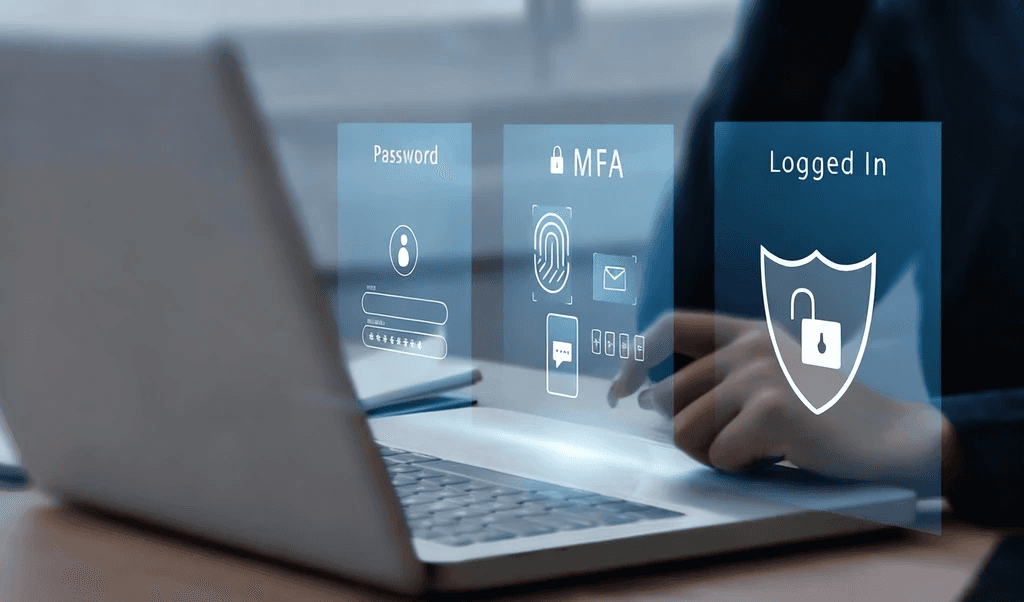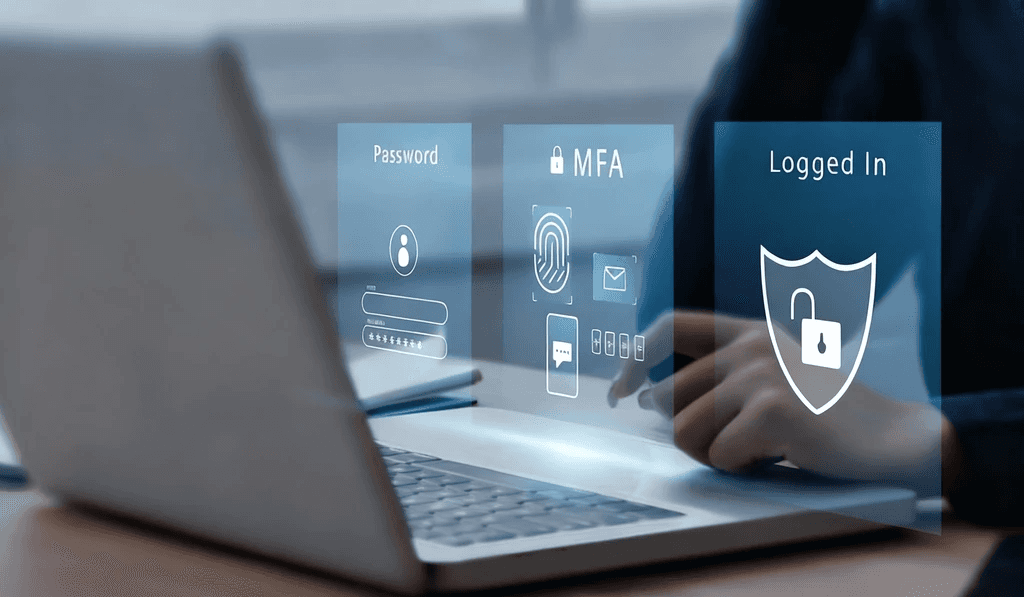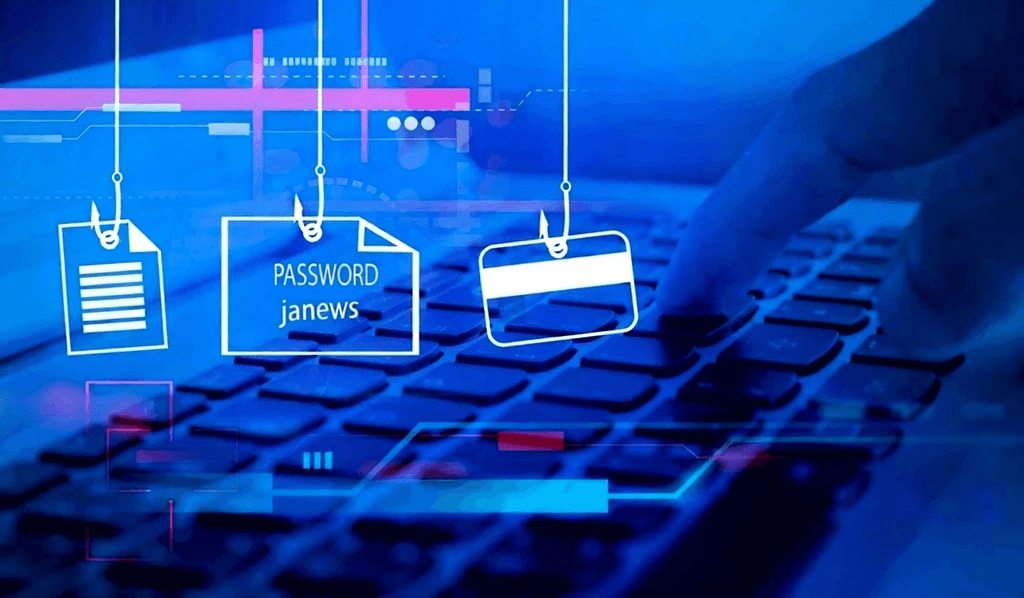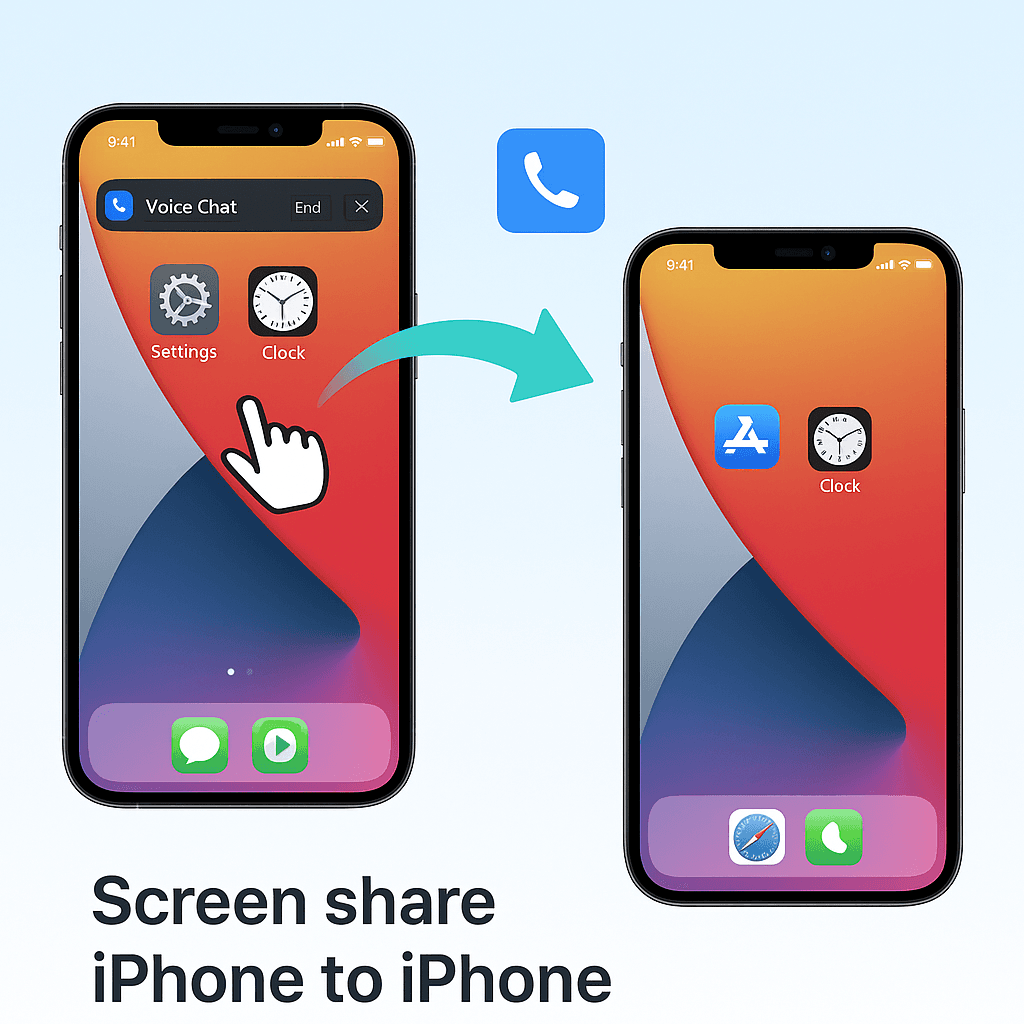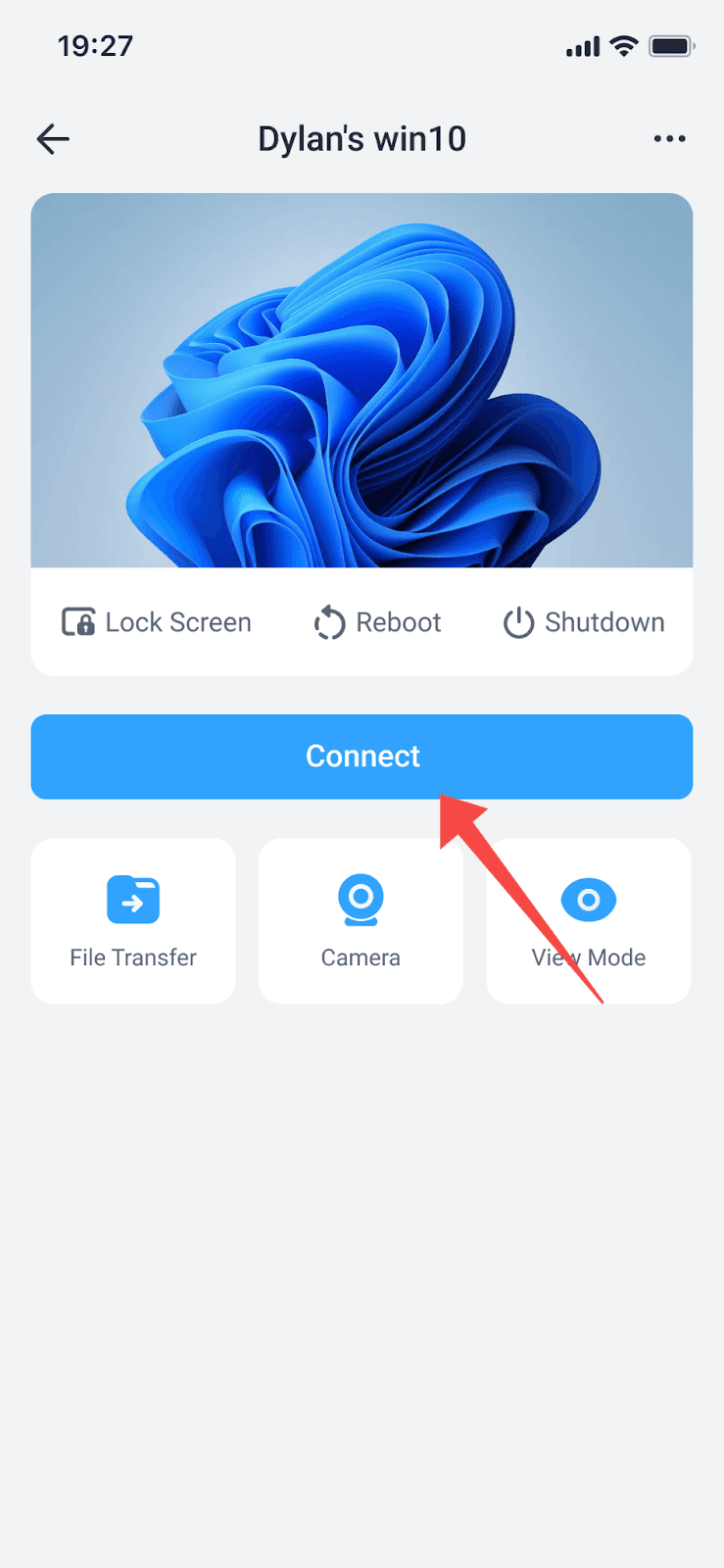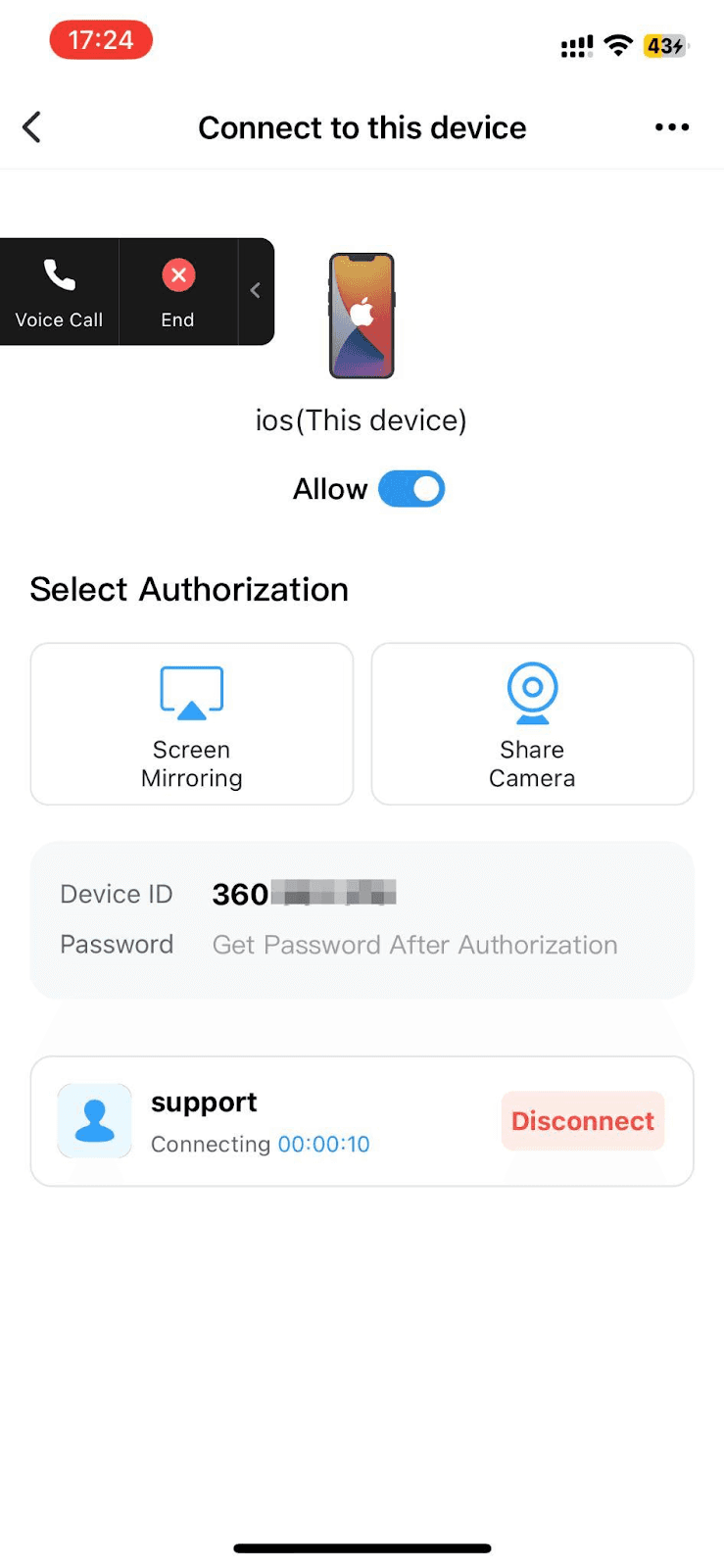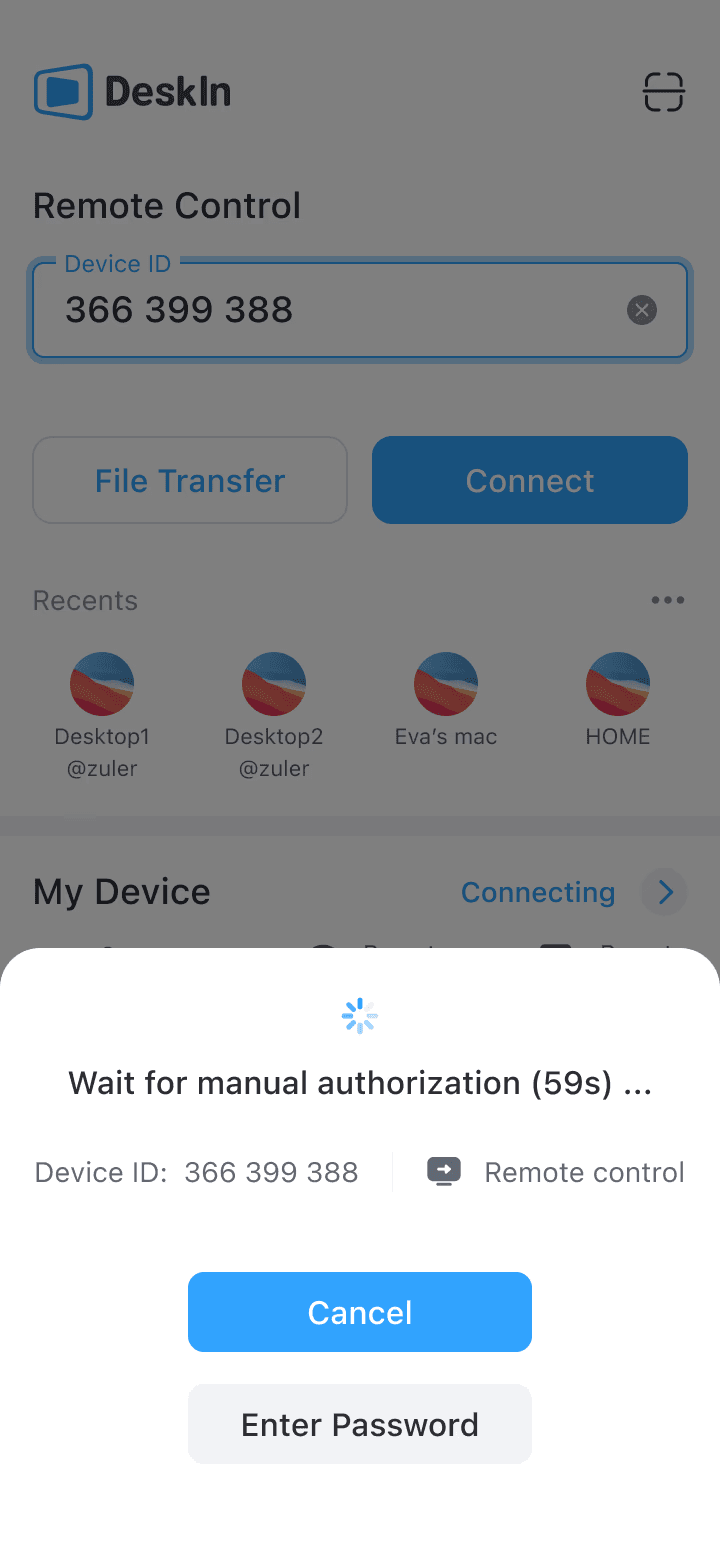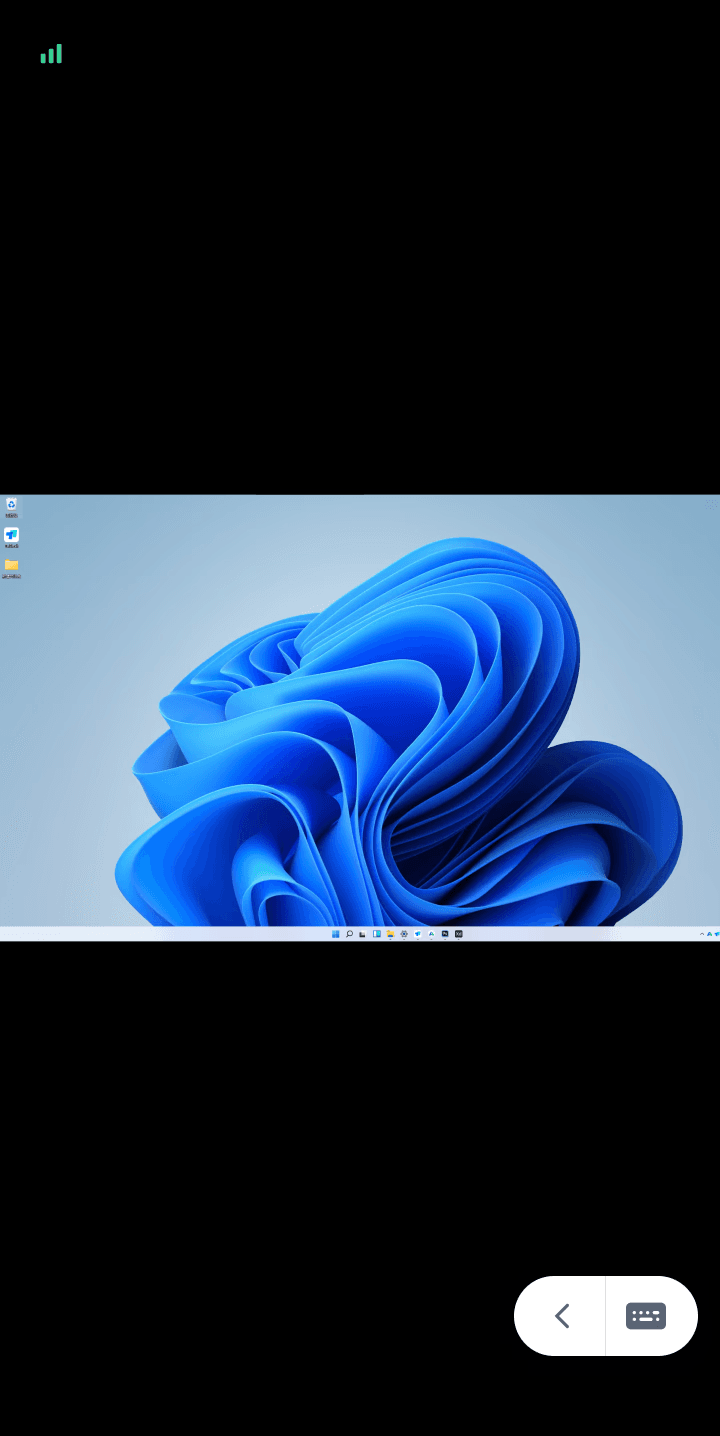Macを使用しているときにPCの問題を抱える友人や家族を助けるのに苦労していますか? ファイル管理、ネットワーク設定の確認、システム構成の調整など、クロスプラットフォームのリモートアクセスは遅延の多い接続や複雑なセットアップを扱う場合が多いです。ウィンドウを移動したりコマンドを入力したりするときのその苛立たしい遅延により、単純なトラブルシューティングが不可能に感じられます。MacからPCへのリモート接続をスムーズに行う方法が必要です。
このガイドでは、MacからPCをシームレスにコントロールするための6つの信頼性の高いツールを調査します。それぞれが固有の強みを持っています。無料のユーティリティからパフォーマンス最適化されたソリューションまで、カジュアルなヘルプデスクのタスク、グラフィック集約作業、企業サポートのいずれにも対応するオプションが見つかります。完璧なリモートアクセスWindowsのために読み続けてください。
👀 発見する価値があります:
1. スムーズなアプリDeskInでMacからPCを遠隔操作
MacからWindowsへのリモートデスクトップ—DeskInは、MacBookまたはiMacからWindows PCを操作できるクロスプラットフォームのリモートデスクトップクライアントです。自宅作業、旅行中の使用、または友人の助けを求めているときでも、通常のリモートツールよりも少ないセットアップでスムーズで安全な接続を提供します。その直感的なインターフェースと高度な機能群により、ファイルやソフトウェアへのアクセス、ファイル転送、MacからのPCゲームなどに最適なリモートソフトウェアです。
👀 DeskInの主な機能
クロスプラットフォーム互換性 – あらゆるWindowsデバイスにMacを接続します。
無人アクセス&プライバシースクリーン – ユーザーの介入なく安全なアクセスを保証します。
低遅延リモートセッション – 入力と視覚フィードバックの平滑化機能を提供。
リモートファイル転送 – サイズやタイプの制限なくMacとPC間でファイルを転送します。
4Kおよび高FPSストリーミング – 4K/60FPSまたは2K/144FPSまでのスムーズなビジュアル。
画面ミラーリング&仮想画面 – WindowsをMacにミラーリング、またはディスプレイを拡張します。
次に、MacからPCをリモートアクセスするためのDeskInを使用する操作手順を確認しましょう!
ステップ1. MacおよびWindows PCの両方にDeskInをダウンロードしてインストールします。メールを使用して無料のDeskInアカウントを作成し、確認プロセスを完了します。Macと対象のWindows PCの両方で同じアカウントにログインします。

ステップ2. MacでDeskInを起動し、PCのDeskInインターフェースに表示されるデバイスIDとパスワードを入力し、「接続」ボタンをクリックしてセッションを開始します。リアルタイムでWindowsデスクトップと対話することができます。

ステップ3. 接続中に、ファイル転送、画面共有、ゲームパッドサポート、マルチモニターコントロールなど、DeskInの機能をインターフェースから直接探索できます。必要に応じて、プライバシーモードを切り替えたり、コントロールモードとビュー専用モードを切り替えたりできます。
DeskInを使用することで、VPNの設定、IP設定、Windowsエディションに関する心配がなく、日常のユーザーとプロフェッショナルのための非常にアクセスしやすいツールとなります。

2. Microsoft Remote Desktopを試す(一部のユーザーは無料)
MacからPCへのリモートアクセスの最も公式な方法は、Microsoft Remote Desktopを使用することです。macOS上では現在Windows Appと呼ばれています。この無料で組み込みのツールは、同じネットワーク上のMacBookまたはiMacからWindows PCへの安全なリモートアクセスを可能にします(VPNやインターネットルーティングを介して)。
Windows Appは完全なマウスとキーボードのコントロール、Retinaディスプレイの最適化、複数モニター、オーディオとビデオリダイレクション、クリップボード共有をサポートします。また、基本的なファイルリダイレクションとリモートデスクトップサービス、Windows 365、Azure Virtual Desktopなどの企業環境へのアクセスも可能です。これはプロフェッショナルやITサポートチームにとって優れたオプションです。
Windows Appを使用する際の制限:
Windows Pro、Enterprise、またはEducationエディションが必要です。Windows Homeでは動作しません。
ネットワークセットアップ(例:VPNまたはポートフォワーディング)が必要になることがあります。
ファイルのドラッグ&ドロップ転送やリモートウェイクのような高度な機能が欠けています。
不安定なネットワークでパフォーマンスが異なる場合があります、特にMacがスリープモードに入った場合。
厳格なITポリシーのために企業環境でセッションが中断するかもしれません。
上記の機能で十分であり、限界が気にならない場合は、以下の手順に従って開始してください。詳しいステップバイステップのガイドラインを確認するには、Microsoft Remote DesktopをMacで使用する方法の完全ガイドを参照してください。
STEP 1: Mac App StoreからMicrosoft Remote Desktop(現在はWindows Appと呼ばれます)をダウンロードし、アプリを開きます。
STEP 2: Windows PCで「設定>システム>リモートデスクトップ」に移動し、リモートアクセスを有効にします。「設定>システム>概要」でPC名を見つけるか、コマンドプロンプトで「ipconfig」を使用してIPアドレスを取得します。
STEP 3: MacのRemote Desktopアプリで、「+ PCを追加」をクリックし、PC名またはIPを入力し、Windowsの資格情報でサインインします。
STEP 4: 必要に応じて表示とオーディオ設定を調整し、「接続」をクリックしてセッションを開始します。
より迅速なセットアップやより流動的なパフォーマンスを求めている場合—特に自宅のネットワーク外で—最初の方法、DeskInがより効率的であるかもしれません。

[修正方法]: Microsoft Remote Desktopが私のコンピュータで動作しない
Microsoft Remote Desktopを使用してPCにリモートでアクセスできない場合、一般的な原因は対象PCでのリモート設定の無効化、ファイアウォールブロック、またはネットワークの不具合です。サービスの失敗と不正な権限も接続をよく切断します。シームレスにPCをリモートで制御するための主要な修正を説明します。
9つの原因と一文で解決策:
リモートアクセス無効: Windowsシステム設定で「リモートデスクトップ」を有効にします。
ファイアウォールブロック: Windowsファイアウォールでリモートデスクトップを許可します(ポート3389)。
ネットワーク障害: pingで接続を確認し、ネットワークドライバを更新します。
サービス停止: services.mscで「リモートデスクトップサービス」を再起動します。
DNSの問題: DNSキャッシュをフラッシュ(
ipconfig /flushdns)するか静的IPを割り当てます。グループポリシー制限: グループポリシーエディタ(
gpedit.msc)を設定してリモートデスクトップを許可します。NLAの競合: 対象PC設定でネットワークレベル認証を一時的に無効にします。
更新の競合: 不安定さを引き起こす最近のWindowsの更新を元に戻します。
権限のエラー: 対象PCの「リモートデスクトップユーザー」にユーザーアカウントを追加します。
あわせて読みたい: Microsoft Remote Desktopがシャットダウンする。
3. Chrome Remote Desktopを使用してPCにアクセス
Chromeに直接組み込まれているChrome Remote Desktopは、スタンドアロンソフトウェアのインストールを不要にし、既存のブラウザを活用して即時のクロスプラットフォームアクセスを可能にします。日常的にChromeを使用するユーザーに最適で、他のコンピュータをリモートで操作するための軽量でオンデマンドのソリューションを提供します。セットアップは2分未満で完了し、GoogleアカウントとChromeブラウザさえあれば十分です。
Chrome Remote DesktopでPCにアクセスする手順:
準備条件:
両方のコンピュータにChromeブラウザをインストール
両方のデバイスで同じGoogleアカウントにサインイン
STEP 1: 対象PCでリモートアクセスを有効にする
Chromeを開き、次のURLへ移動します
remotedesktop.google.com/access > ダウンロードをクリック > ホストコンポーネントをインストールしてPCに名前を付け、セキュアなPINを設定します。

STEP 2: セキュリティ許可の付与(Mac特有)
Macホストを設定する場合、アプリケーションの許可を与えるために、プロンプトが出たらシステムパスワードを入力します。必要に応じてセキュリティとプライバシーの設定を調整します。
STEP 3: Macから接続を開始
Macでremotedesktop.google.com/accessを訪れます → リモートデバイスの下にある対象PCを選択 → PINを入力。

STEP 4: リモートコントロールセッション
画面上のツールバーを使用してCtrl+Alt+Delを送信したり、解像度を調整したり、全画面モードを切り替えたりします。リモートPCのデスクトップが直接Chromeタブに表示されます。
STEP 5: セッションを終了
Chromeタブを閉じるか、セッションツールバーで切断をクリックします。アクセスを取り消すには、remotedesktop.google.com/accessでPCをデバイスリストから削除します。
3つの他のツールでMacからPCにリモートアクセス
これらの主要な方法を超えて、3つの強力なツールを探索してMacからPCをコントロールします。Supremo、Parsec、およびAnyDeskです。それぞれが独自のシナリオで卓越しており、簡単な画面共有からグラフィック集約型ワークフローまで、スケーラブルな企業コントロールに至るまで。読み続けて、どのツールがあなたのリモートアクセスニーズに最も適しているかを発見してください。
Supremo - 使いやすさ

Supremoはルーター設定なしでのリモートアクセスを提供し、異なるネットワークでのMacからPCへのリモートの理想的な方法です。そのオンラインアドレス帳は連絡先とチャットを統合し、無料プランと手頃な価格の有料プラン(5€/月から)はカジュアルユーザーに最適です。ただし、制限があります。クリップボード同期(チャット内でも)なし、ラグが目立つ、スクリーンがスリープするとセッションが途切れる、画面回転中にインターフェイスの問題が発生します。
Parsec - 高パフォーマンス

グラフィック集約型ワークフローのために設計されたParsecは、滑らかな60FPS超HDストリーミングを実現します。IT、クリエイティブデザイン、またはゲームでMacやPCでのリモートログインをする場合に最適です。すべての接続はピアツーピア暗号化を活用し、サードパーティへのデータ漏洩を完全に防ぎます。インストール、デバイスのペアリングを行い、デスクトップネイティブな応答性でリソース集約型タスクをダミネートしてください。
AnyDesk - スケーラブルなコントロールパワー

MacからPCへのリモートが必要な場合、AnyDeskは無制限のファイル転送、リモート印刷、無人アクセス、画面共有、および共同ホワイトボードなどの高度な機能を提供します。その軽量設計(2MB)は、迅速なセットアップを可能にし、登録不要です。ただし、無料版はデバイス管理を3台に制限し、頻繁なセッションには商用利用のポップアップが表示され、ビジネス活動が疑われる場合には接続がブロックされることがあります。
クイック比較: MacOSからPCへのリモートに最適なツールを選ぶ
これらのツールを調査した後、DeskInとMicrosoft Remote Desktop(Windows App)がどのようにパフォーマンスを発揮するか、その他のソフトウェアが重要な領域でどう比較されるかを十分比較できない場合は、こちらに要約しました。
ここでは、要件に基づいて最適なソリューションを選択しやすくするために、並べて比較しています:
DeskIn: 流れるような操作を可能にするサブ40msの低遅延とリモートセッション中のプライバシーを保護する軍用グレードの256ビット暗号化を提供します。
Microsoft Remote Desktop: Windowsへの統合を無料で提供(Home Editionを除く)し、画面解像度のカスタム調整とマルチモニターサポートで柔軟なワークフローを実現します。
Chrome Remote Desktop: インストール不要でChrome内で完全に動作し、毎日のユーザーにとってシンプルなクロスプラットフォームアクセスを実現します。
Supremo: 連絡先とチャットの統合オンラインアドレス帳と接続報告による請求/監査精度向上のチーム管理を簡素化します。
Parsec: 超HDビデオを60FPSでラグなしでストリーミングし、MacをPCゲームやグラフィックス集約型タスクのパワーハウスに変えます。
AnyDesk: ファイル転送やリモート印刷などの企業機能で多様なMac/Windowsデバイスにスムーズにスケールします。
軽いオフィス作業向けの簡潔なツールが必要であれば、Microsoft Remote Desktopがその仕事をこなします。しかし、柔軟性とパフォーマンスを求めるパワーユーザーやゲーマー、リモートチームにとっては、DeskInが現代的で機能満載のソリューションです。

MacからWindowsへのリモートアクセスに関するFAQ
Q1: MacからPCにリモートアクセスするには、同じネットワークにいる必要がありますか?
Windowsアプリを使用する場合、通常は同一のローカルネットワーク上にいるか、VPNでその環境を再現する必要があります。そうでない場合、接続に失敗したり、ポートフォワーディングが必要となることがあり、初心者には扱いづらい点があります
DeskInはデフォルトでクラウドベースのリレーサーバーを使用してクロスネットワーク接続を可能にします。これにより、異なる場所やネットワーク間をリモートで作業するユーザーにとって便利です。
Q2: リモートセッション中にMacからPCへファイルを転送できますか?
Windows Appは基本的なファイルリダイレクションをサポートしますが、あらかじめ指定されたフォルダからのみで、ファイル処理機能に限定されています。動的なファイル転送には適していません。
DeskInは、最大12MB/sのスピードでリアルタイムのドラッグアンドドロップ転送を可能にする専用のファイル転送インターフェースを提供し、ファイルフォーマットにかかわらず対応します。クリップボード同期やフォルダ共有などの高度なワークフローもサポートしています。
Q3: MacからPCでゲームをプレイできますか?
Windows Appはゲーミングのような高性能タスク向けには設計されていません。入力遅延、制限されたFPS、ゲームコントローラーのサポートの欠如は、インタラクティブなコンテンツには不向きです。
DeskInは60FPSストリーミング、低遅延入力、ゲームパッドパススルーのサポート、カスタマイズ可能なキーボード/マウスマッピングを提供しています。完全なゲームストリーミングプラットフォームではありませんが、カジュアルまたは中程度のリモートゲーミングに適しています。
結論
MacからPCへのリモートへの理想的な解決策は、優先事項に完全に依存します: インストール不要のシンプルさを求めるならChrome RDを、遅延のないゲーミングを求めるならParsecなどです。Supremoは連絡先の多いチームに適し、AnyDeskはコラボレーションのためにスケールし、Microsoft RDはネイティブなWindowsの統合を活用します。コアワークフローにマッチする1〜2のオプションをテストすることをお勧めします。
しかし、より多用途で、機能が豊富で、ユーザーフレンドリーなリモートデスクトップ体験が必要であれば、DeskInは目立っています。技術的な障壁を排除し、作業からエンターテイメントまでの幅広い用途をサポートし、ファイル転送や画面ミラーリング、4Kストリーミングなどの強力なツールを無料版でも提供します。

Macを使用しているときにPCの問題を抱える友人や家族を助けるのに苦労していますか? ファイル管理、ネットワーク設定の確認、システム構成の調整など、クロスプラットフォームのリモートアクセスは遅延の多い接続や複雑なセットアップを扱う場合が多いです。ウィンドウを移動したりコマンドを入力したりするときのその苛立たしい遅延により、単純なトラブルシューティングが不可能に感じられます。MacからPCへのリモート接続をスムーズに行う方法が必要です。
このガイドでは、MacからPCをシームレスにコントロールするための6つの信頼性の高いツールを調査します。それぞれが固有の強みを持っています。無料のユーティリティからパフォーマンス最適化されたソリューションまで、カジュアルなヘルプデスクのタスク、グラフィック集約作業、企業サポートのいずれにも対応するオプションが見つかります。完璧なリモートアクセスWindowsのために読み続けてください。
👀 発見する価値があります:
1. スムーズなアプリDeskInでMacからPCを遠隔操作
MacからWindowsへのリモートデスクトップ—DeskInは、MacBookまたはiMacからWindows PCを操作できるクロスプラットフォームのリモートデスクトップクライアントです。自宅作業、旅行中の使用、または友人の助けを求めているときでも、通常のリモートツールよりも少ないセットアップでスムーズで安全な接続を提供します。その直感的なインターフェースと高度な機能群により、ファイルやソフトウェアへのアクセス、ファイル転送、MacからのPCゲームなどに最適なリモートソフトウェアです。
👀 DeskInの主な機能
クロスプラットフォーム互換性 – あらゆるWindowsデバイスにMacを接続します。
無人アクセス&プライバシースクリーン – ユーザーの介入なく安全なアクセスを保証します。
低遅延リモートセッション – 入力と視覚フィードバックの平滑化機能を提供。
リモートファイル転送 – サイズやタイプの制限なくMacとPC間でファイルを転送します。
4Kおよび高FPSストリーミング – 4K/60FPSまたは2K/144FPSまでのスムーズなビジュアル。
画面ミラーリング&仮想画面 – WindowsをMacにミラーリング、またはディスプレイを拡張します。
次に、MacからPCをリモートアクセスするためのDeskInを使用する操作手順を確認しましょう!
ステップ1. MacおよびWindows PCの両方にDeskInをダウンロードしてインストールします。メールを使用して無料のDeskInアカウントを作成し、確認プロセスを完了します。Macと対象のWindows PCの両方で同じアカウントにログインします。

ステップ2. MacでDeskInを起動し、PCのDeskInインターフェースに表示されるデバイスIDとパスワードを入力し、「接続」ボタンをクリックしてセッションを開始します。リアルタイムでWindowsデスクトップと対話することができます。

ステップ3. 接続中に、ファイル転送、画面共有、ゲームパッドサポート、マルチモニターコントロールなど、DeskInの機能をインターフェースから直接探索できます。必要に応じて、プライバシーモードを切り替えたり、コントロールモードとビュー専用モードを切り替えたりできます。
DeskInを使用することで、VPNの設定、IP設定、Windowsエディションに関する心配がなく、日常のユーザーとプロフェッショナルのための非常にアクセスしやすいツールとなります。

2. Microsoft Remote Desktopを試す(一部のユーザーは無料)
MacからPCへのリモートアクセスの最も公式な方法は、Microsoft Remote Desktopを使用することです。macOS上では現在Windows Appと呼ばれています。この無料で組み込みのツールは、同じネットワーク上のMacBookまたはiMacからWindows PCへの安全なリモートアクセスを可能にします(VPNやインターネットルーティングを介して)。
Windows Appは完全なマウスとキーボードのコントロール、Retinaディスプレイの最適化、複数モニター、オーディオとビデオリダイレクション、クリップボード共有をサポートします。また、基本的なファイルリダイレクションとリモートデスクトップサービス、Windows 365、Azure Virtual Desktopなどの企業環境へのアクセスも可能です。これはプロフェッショナルやITサポートチームにとって優れたオプションです。
Windows Appを使用する際の制限:
Windows Pro、Enterprise、またはEducationエディションが必要です。Windows Homeでは動作しません。
ネットワークセットアップ(例:VPNまたはポートフォワーディング)が必要になることがあります。
ファイルのドラッグ&ドロップ転送やリモートウェイクのような高度な機能が欠けています。
不安定なネットワークでパフォーマンスが異なる場合があります、特にMacがスリープモードに入った場合。
厳格なITポリシーのために企業環境でセッションが中断するかもしれません。
上記の機能で十分であり、限界が気にならない場合は、以下の手順に従って開始してください。詳しいステップバイステップのガイドラインを確認するには、Microsoft Remote DesktopをMacで使用する方法の完全ガイドを参照してください。
STEP 1: Mac App StoreからMicrosoft Remote Desktop(現在はWindows Appと呼ばれます)をダウンロードし、アプリを開きます。
STEP 2: Windows PCで「設定>システム>リモートデスクトップ」に移動し、リモートアクセスを有効にします。「設定>システム>概要」でPC名を見つけるか、コマンドプロンプトで「ipconfig」を使用してIPアドレスを取得します。
STEP 3: MacのRemote Desktopアプリで、「+ PCを追加」をクリックし、PC名またはIPを入力し、Windowsの資格情報でサインインします。
STEP 4: 必要に応じて表示とオーディオ設定を調整し、「接続」をクリックしてセッションを開始します。
より迅速なセットアップやより流動的なパフォーマンスを求めている場合—特に自宅のネットワーク外で—最初の方法、DeskInがより効率的であるかもしれません。

[修正方法]: Microsoft Remote Desktopが私のコンピュータで動作しない
Microsoft Remote Desktopを使用してPCにリモートでアクセスできない場合、一般的な原因は対象PCでのリモート設定の無効化、ファイアウォールブロック、またはネットワークの不具合です。サービスの失敗と不正な権限も接続をよく切断します。シームレスにPCをリモートで制御するための主要な修正を説明します。
9つの原因と一文で解決策:
リモートアクセス無効: Windowsシステム設定で「リモートデスクトップ」を有効にします。
ファイアウォールブロック: Windowsファイアウォールでリモートデスクトップを許可します(ポート3389)。
ネットワーク障害: pingで接続を確認し、ネットワークドライバを更新します。
サービス停止: services.mscで「リモートデスクトップサービス」を再起動します。
DNSの問題: DNSキャッシュをフラッシュ(
ipconfig /flushdns)するか静的IPを割り当てます。グループポリシー制限: グループポリシーエディタ(
gpedit.msc)を設定してリモートデスクトップを許可します。NLAの競合: 対象PC設定でネットワークレベル認証を一時的に無効にします。
更新の競合: 不安定さを引き起こす最近のWindowsの更新を元に戻します。
権限のエラー: 対象PCの「リモートデスクトップユーザー」にユーザーアカウントを追加します。
あわせて読みたい: Microsoft Remote Desktopがシャットダウンする。
3. Chrome Remote Desktopを使用してPCにアクセス
Chromeに直接組み込まれているChrome Remote Desktopは、スタンドアロンソフトウェアのインストールを不要にし、既存のブラウザを活用して即時のクロスプラットフォームアクセスを可能にします。日常的にChromeを使用するユーザーに最適で、他のコンピュータをリモートで操作するための軽量でオンデマンドのソリューションを提供します。セットアップは2分未満で完了し、GoogleアカウントとChromeブラウザさえあれば十分です。
Chrome Remote DesktopでPCにアクセスする手順:
準備条件:
両方のコンピュータにChromeブラウザをインストール
両方のデバイスで同じGoogleアカウントにサインイン
STEP 1: 対象PCでリモートアクセスを有効にする
Chromeを開き、次のURLへ移動します
remotedesktop.google.com/access > ダウンロードをクリック > ホストコンポーネントをインストールしてPCに名前を付け、セキュアなPINを設定します。

STEP 2: セキュリティ許可の付与(Mac特有)
Macホストを設定する場合、アプリケーションの許可を与えるために、プロンプトが出たらシステムパスワードを入力します。必要に応じてセキュリティとプライバシーの設定を調整します。
STEP 3: Macから接続を開始
Macでremotedesktop.google.com/accessを訪れます → リモートデバイスの下にある対象PCを選択 → PINを入力。

STEP 4: リモートコントロールセッション
画面上のツールバーを使用してCtrl+Alt+Delを送信したり、解像度を調整したり、全画面モードを切り替えたりします。リモートPCのデスクトップが直接Chromeタブに表示されます。
STEP 5: セッションを終了
Chromeタブを閉じるか、セッションツールバーで切断をクリックします。アクセスを取り消すには、remotedesktop.google.com/accessでPCをデバイスリストから削除します。
3つの他のツールでMacからPCにリモートアクセス
これらの主要な方法を超えて、3つの強力なツールを探索してMacからPCをコントロールします。Supremo、Parsec、およびAnyDeskです。それぞれが独自のシナリオで卓越しており、簡単な画面共有からグラフィック集約型ワークフローまで、スケーラブルな企業コントロールに至るまで。読み続けて、どのツールがあなたのリモートアクセスニーズに最も適しているかを発見してください。
Supremo - 使いやすさ

Supremoはルーター設定なしでのリモートアクセスを提供し、異なるネットワークでのMacからPCへのリモートの理想的な方法です。そのオンラインアドレス帳は連絡先とチャットを統合し、無料プランと手頃な価格の有料プラン(5€/月から)はカジュアルユーザーに最適です。ただし、制限があります。クリップボード同期(チャット内でも)なし、ラグが目立つ、スクリーンがスリープするとセッションが途切れる、画面回転中にインターフェイスの問題が発生します。
Parsec - 高パフォーマンス

グラフィック集約型ワークフローのために設計されたParsecは、滑らかな60FPS超HDストリーミングを実現します。IT、クリエイティブデザイン、またはゲームでMacやPCでのリモートログインをする場合に最適です。すべての接続はピアツーピア暗号化を活用し、サードパーティへのデータ漏洩を完全に防ぎます。インストール、デバイスのペアリングを行い、デスクトップネイティブな応答性でリソース集約型タスクをダミネートしてください。
AnyDesk - スケーラブルなコントロールパワー

MacからPCへのリモートが必要な場合、AnyDeskは無制限のファイル転送、リモート印刷、無人アクセス、画面共有、および共同ホワイトボードなどの高度な機能を提供します。その軽量設計(2MB)は、迅速なセットアップを可能にし、登録不要です。ただし、無料版はデバイス管理を3台に制限し、頻繁なセッションには商用利用のポップアップが表示され、ビジネス活動が疑われる場合には接続がブロックされることがあります。
クイック比較: MacOSからPCへのリモートに最適なツールを選ぶ
これらのツールを調査した後、DeskInとMicrosoft Remote Desktop(Windows App)がどのようにパフォーマンスを発揮するか、その他のソフトウェアが重要な領域でどう比較されるかを十分比較できない場合は、こちらに要約しました。
ここでは、要件に基づいて最適なソリューションを選択しやすくするために、並べて比較しています:
DeskIn: 流れるような操作を可能にするサブ40msの低遅延とリモートセッション中のプライバシーを保護する軍用グレードの256ビット暗号化を提供します。
Microsoft Remote Desktop: Windowsへの統合を無料で提供(Home Editionを除く)し、画面解像度のカスタム調整とマルチモニターサポートで柔軟なワークフローを実現します。
Chrome Remote Desktop: インストール不要でChrome内で完全に動作し、毎日のユーザーにとってシンプルなクロスプラットフォームアクセスを実現します。
Supremo: 連絡先とチャットの統合オンラインアドレス帳と接続報告による請求/監査精度向上のチーム管理を簡素化します。
Parsec: 超HDビデオを60FPSでラグなしでストリーミングし、MacをPCゲームやグラフィックス集約型タスクのパワーハウスに変えます。
AnyDesk: ファイル転送やリモート印刷などの企業機能で多様なMac/Windowsデバイスにスムーズにスケールします。
軽いオフィス作業向けの簡潔なツールが必要であれば、Microsoft Remote Desktopがその仕事をこなします。しかし、柔軟性とパフォーマンスを求めるパワーユーザーやゲーマー、リモートチームにとっては、DeskInが現代的で機能満載のソリューションです。

MacからWindowsへのリモートアクセスに関するFAQ
Q1: MacからPCにリモートアクセスするには、同じネットワークにいる必要がありますか?
Windowsアプリを使用する場合、通常は同一のローカルネットワーク上にいるか、VPNでその環境を再現する必要があります。そうでない場合、接続に失敗したり、ポートフォワーディングが必要となることがあり、初心者には扱いづらい点があります
DeskInはデフォルトでクラウドベースのリレーサーバーを使用してクロスネットワーク接続を可能にします。これにより、異なる場所やネットワーク間をリモートで作業するユーザーにとって便利です。
Q2: リモートセッション中にMacからPCへファイルを転送できますか?
Windows Appは基本的なファイルリダイレクションをサポートしますが、あらかじめ指定されたフォルダからのみで、ファイル処理機能に限定されています。動的なファイル転送には適していません。
DeskInは、最大12MB/sのスピードでリアルタイムのドラッグアンドドロップ転送を可能にする専用のファイル転送インターフェースを提供し、ファイルフォーマットにかかわらず対応します。クリップボード同期やフォルダ共有などの高度なワークフローもサポートしています。
Q3: MacからPCでゲームをプレイできますか?
Windows Appはゲーミングのような高性能タスク向けには設計されていません。入力遅延、制限されたFPS、ゲームコントローラーのサポートの欠如は、インタラクティブなコンテンツには不向きです。
DeskInは60FPSストリーミング、低遅延入力、ゲームパッドパススルーのサポート、カスタマイズ可能なキーボード/マウスマッピングを提供しています。完全なゲームストリーミングプラットフォームではありませんが、カジュアルまたは中程度のリモートゲーミングに適しています。
結論
MacからPCへのリモートへの理想的な解決策は、優先事項に完全に依存します: インストール不要のシンプルさを求めるならChrome RDを、遅延のないゲーミングを求めるならParsecなどです。Supremoは連絡先の多いチームに適し、AnyDeskはコラボレーションのためにスケールし、Microsoft RDはネイティブなWindowsの統合を活用します。コアワークフローにマッチする1〜2のオプションをテストすることをお勧めします。
しかし、より多用途で、機能が豊富で、ユーザーフレンドリーなリモートデスクトップ体験が必要であれば、DeskInは目立っています。技術的な障壁を排除し、作業からエンターテイメントまでの幅広い用途をサポートし、ファイル転送や画面ミラーリング、4Kストリーミングなどの強力なツールを無料版でも提供します。


一度に叶う
遊びも仕事も
DeskInリモートゲーム
今なら14.32米ドル 🎉 7月16日から31日限定
プロモーションコードを追加してください: deskinsummer1



